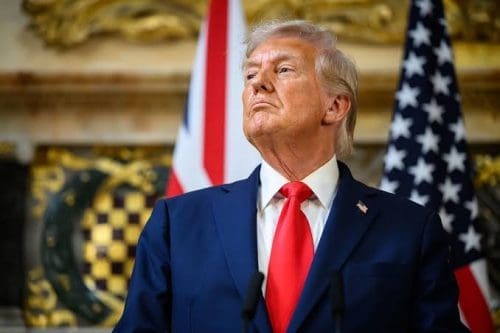The Trump administration is taking direct equity positions in American rare earth mineral companies, marking an unprecedented federal intervention into supply chains that China has dominated for decades and that underpin everything from smartphones to military hardware.
The White House has moved to take direct ownership stakes in the U.S. critical mineral supply chain, with recent investments including a 15 percent stake in MP Materials Corp., the largest rare earth producer in the United States, and a 5 percent equity position in Lithium Americas Corp., which is developing Nevada’s Thacker Pass lithium project.
The strategy represents a sharp departure from traditional American industrial policy, where government typically supports private sector development through grants, loans, or regulatory support rather than becoming a direct shareholder in commercial enterprises. The approach signals how seriously the administration views supply chain vulnerabilities exposed by trade tensions with China.
President Trump announced an agreement with China to resume exports of rare earth minerals and magnets following two months of supply disruptions to U.S. industry, highlighting the leverage China’s chokehold on rare earth supply chains provides Beijing over American manufacturers.
Immediately upon returning to office, President Trump signed an Executive Order to make the U.S. “the leading producer and processor of non-fuel minerals, including rare earth minerals”, establishing the policy framework for federal investments in domestic mining and processing capabilities.
The administration’s partnership with MP Materials, finalized in July, includes unusual terms designed to protect taxpayers while supporting domestic production. Under the MP deal, the Pentagon set a price floor of $110 per kilogram for neodymium praseodymium oxide, a key input in rare earth magnets. The government pays MP the difference when the market price falls below $110 but in turn takes 30 percent of the upside when prices exceed $110.
That structure shares both risks and rewards between government and private investors, creating incentives for MP Materials to maximize efficiency while ensuring the Pentagon’s magnet supply doesn’t disappear if global prices collapse. High power magnets using these rare earth elements are essential for electric vehicles, wind turbines, robotics, and advanced electronics.
The Lithium Americas investment, announced in late September, targets battery grade lithium carbonate production needed for the electric vehicle transition that both Democratic and Republican administrations have promoted, though through different policy mechanisms. Lithium Americas’ Thacker Pass project in Nevada represents one of North America’s largest undeveloped lithium deposits.
Now the administration appears positioned to expand its mineral company portfolio. USA Rare Earth is developing a mine in Sierra Blanca, Texas, and a magnet production facility in Stillwater, Oklahoma, and has confirmed it is in close communication with the administration about a potential deal.
Barbara Humpton, USA Rare Earth’s CEO and former chief of Siemens USA, told CNBC on October 2 that building out America’s rare earth marketplace will require multiple players rather than relying on a single dominant producer. Her comments suggested the company welcomes federal investment as validation and financial support for an industry requiring massive capital before generating returns.
USA Rare Earth’s Round Top deposit contains valuable heavy rare earths such as terbium and dysprosium, which sell for hundreds to thousands of dollars per kilogram, compared to the cheaper light rare earths that competitor MP Materials produces. That distinction matters because heavy rare earths are particularly critical for defense applications and high performance magnets.
The administration’s equity investment approach offers advantages over traditional government procurement contracts. Direct ownership stakes align government and company interests around long term production capacity rather than short term contract fulfillment. If companies succeed commercially, taxpayers benefit through appreciation in their equity positions. If companies fail, losses are shared rather than falling entirely on private investors.
However, the strategy also raises questions about government competence in picking commercial winners, potential conflicts of interest in regulatory decisions affecting companies where government holds stakes, and whether federal ownership might discourage additional private investment from shareholders wary of government influence over corporate strategy.
China currently controls approximately 70 percent of global rare earth mining and over 90 percent of processing capacity, giving Beijing tremendous leverage over supply chains for products ranging from consumer electronics to weapons systems. That dominance developed not through superior geology but through decades of investment in mining and refining infrastructure while other countries ceded the market due to environmental concerns and economic calculations.
Rare earth mining and processing create significant environmental challenges including radioactive waste, toxic chemical use, and landscape disruption. China’s willingness to accept those environmental costs, combined with scale advantages and integrated supply chains, made competing Western operations economically unviable for years.
The Trump administration’s investments aim to overcome those economic barriers through direct subsidies embedded in equity stakes and guaranteed pricing mechanisms. Whether the strategy succeeds depends on sustained political commitment across multiple administrations, since building complete rare earth supply chains requires years of development before generating commercial returns.
Critics of industrial policy argue that government lacks the expertise and discipline to allocate capital effectively, pointing to failed investments in companies like Solyndra during the Obama administration’s clean energy push. Supporters counter that strategic industries critical to national security and economic competitiveness justify government intervention that markets alone won’t provide.
For American rare earth companies, federal equity investments provide validation that attracts additional private capital while offering financial cushions during development phases when expenses vastly exceed revenues. The political risk is that changing administrations might abandon the strategy before investments mature, leaving companies dependent on government support stranded without alternative funding sources.
The rare earth investment strategy intersects with broader Trump administration priorities around reshoring manufacturing, reducing dependence on China, and promoting domestic resource development. Whether those priorities survive potential future political transitions will determine if America’s rare earth revival represents lasting industrial transformation or temporary government intervention that fades once political winds shift.
Source: newsghana.com.gh











